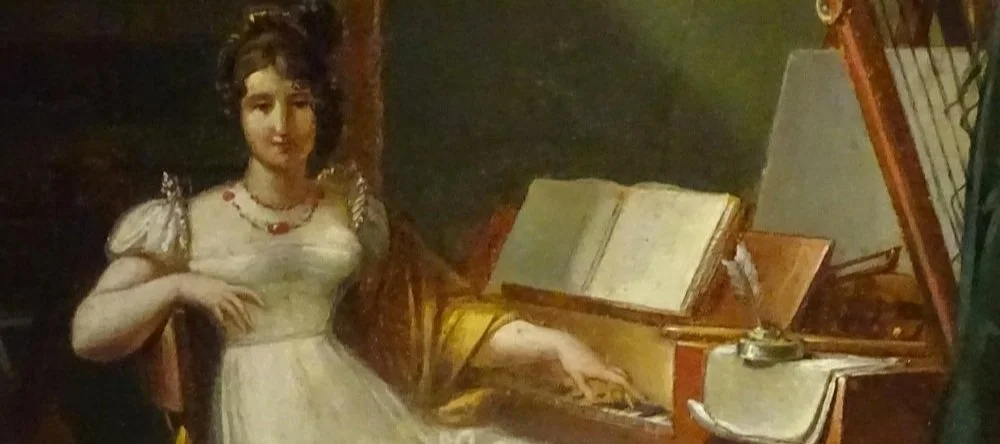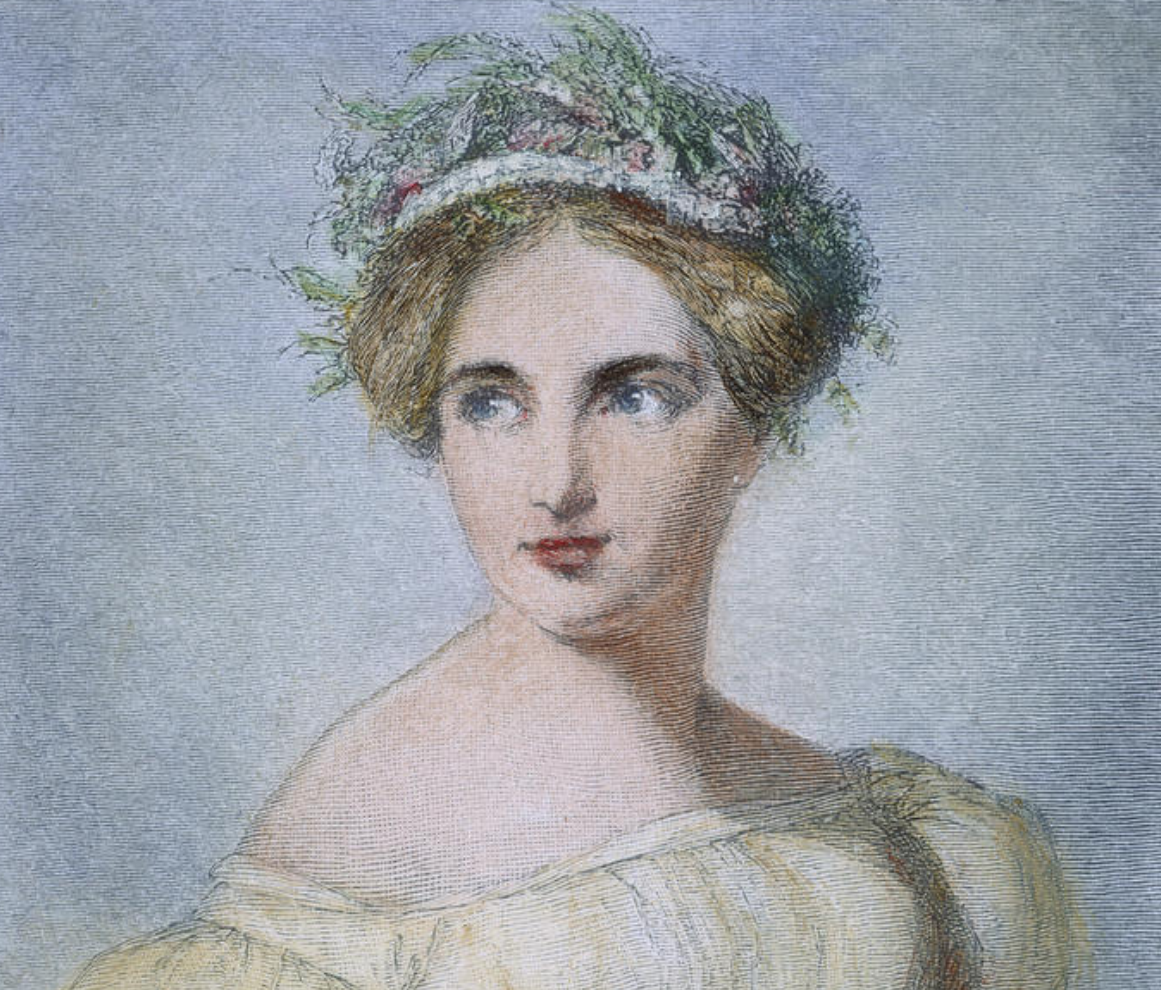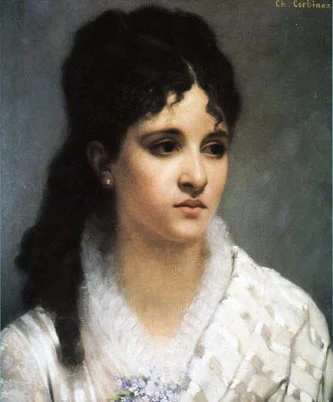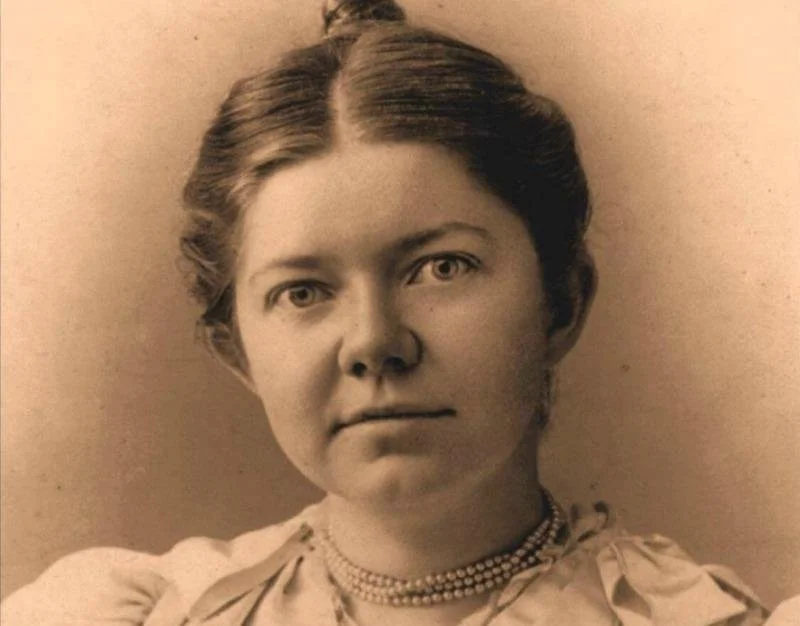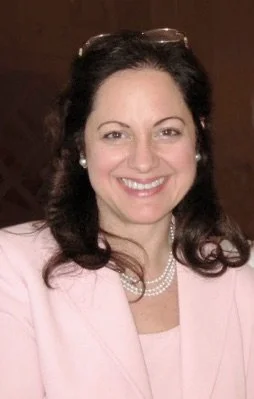For booking inquiries, please contact:
PARKER ARTISTS
Thomas F. Parker
(212) 864-7928
tom@parkerartists.com
Donna Voce is an ongoing musical project that celebrates music written by women composers from 18 to 21 century.
A contemporary of Mozart, Haydn and Beethoven Hélène de Montgeroult (1764-1836) was a French composer, pianist and teacher. Her music has been described as “the precursor of Romanticism” and her volume of 114 Studies has a remarkable variety of technical and musical ideas. Montgeroult was the first Professor of Piano when the Paris Conservatoire opened in 1795.
Fanny Mendelssohn’s (1805-1847) rich and creative life was conducted in a private sphere of the 19th century music salon. Her catalogue includes over 460 works ranging from Lieder to piano and choral works. As a member of a wealthy upper class family, Fanny received an excellent education alongside her younger brother Felix. Visitors of the Mendelssohn household were dazzled by the talented siblings. At 13 Fanny played all 24 Preludes from Bach’s Well Tempered Clavier from memory in honor of her father’s birthday. However, the prevailing attitudes of the time toward women prevented Fanny from a more public pursuit of her musical career. In a letter to the 14 year old Fanny, her father Abraham said: “Music will perhaps become [Felix’s] profession, whilst for you it can and must only be an ornament, never the root of your being and doing.”
Fanny was fortunate in her marriage to a painter Wilhelm Hensel, who cherished and encouraged Fanny’s musical talent. Their home’s Sunday Musicale became one of the most sought after invitations in Berlin. Both Clara Schumann and Franz Liszt were among the visiting virtuosi of the salon, and since the attendance was by invitation only, this activity was considered socially acceptable by Fanny’s family and brought great prestige to the Mendelssohn name.
Dubbed Europe’s “Queen of the Piano”, Clara Schumann (1819-1896) was one of the most important pianists of the 19th century and a peer of such giants as Liszt, Thalberg and Anton Rubinstein. She was one of the first artists along with Franz Lizst to start giving solo concerts without assisting artists and perform from memory. Robert Schumann became her father’s (Friedrich Wieck’s) student when Clara was 11. Ten years later, after Friedrich refused to consent to their marriage, Robert and Clara wed after battling him in court. Although their life together began in a true pursuit of a family and artistic partnership, over time Robert’s creative life took precedent over Clara’s. Her family duties as a mother of eight and a main breadwinner of the household limited her time for creative output. Robert’s tragic demise into mental illness and consequent early death was one of several tragedies in Clara’s life. Four of her children predeceased her and one son was incarcerated in a mental hospital for over 40 years. She supported her children and grandchildren by her earnings from concerts and teaching and spent her life championing the works of her late husband.
Clara remained a revered artist until the end of her life as indicated in words of a London critic:
“We think we are correct in saying that no pianist ever before retained so powerful a hold upon the public mind for so long a period… By her modesty, prudence and talents she has gradually achieved a veritable triumph.”
Clara Schumann Impromptu, Larghetto & Scherzo
French pianist and composer Cécile Chaminade (1857-1944) enjoyed an illustrious career with over 400 compositions being published in her lifetime. Her works include character pieces for piano, songs, orchestral suites, a comic opera La Sevillane, and Konzertstück for piano and orchestra. Born in Paris, she first studied with her mother and later took private lessons with faculty of the Paris Conservatory since her father disapproved of her being formally enrolled in a school. She first made the name for herself by giving recitals of her music, which eventually led to concert tours throughout Europe. She was especially popular in England and a favorite guest of Queen Victoria. Her American tour in 1908 was a triumph and led to the formation of “Chaminade Clubs” throughout the country.
Melanie “Mel” Bonis (1858 – 1937)
Her compositional styles merges the late romanticism with elements of emerging Impressionism. A student of César Franck and a classmate of Claude Debussy at Paris Conservatory, her oeuvre of over 300 works ranges from piano and instrumental works to chamber music, orchestra and choral music.
My first excursion into the world of Mel Bonis is the programmatic Femmes de Legende (Women of Legend) - a series of musical portraits of enigmatic literary heroines.
Amy Beach - Dreaming from Four Sketches for Piano, Op. 15 No. 3
Amy Beach (1867-1944) was one of the first great American composers who did not receive their music training in Europe. Her creative output of 300 works includes 150 songs, for which she was most celebrated during her lifetime, as well as choral, chamber and piano works. Born Amy Cheney into a distinguished New England family, she displayed astonishing musical abilities by age four when she mentally composed her first piano pieces and later played them. At 18 Amy married a Boston surgeon Dr. Henry Harris Aubrey Beach. Her name would subsequently be listed on concert programs and published compositions as "Mrs. H. H. A. Beach." In her marriage contract she agreed to "live according to his status, that is, function as a society matron and patron of the arts.” She further settled to never to teach piano, an activity widely associated with women and regarded as providing "pin money." Her performances were to be limited to two public recitals per year with money being donated to charity. Although Amy considered herself “a pianist first and foremost", her circumstances led her to pursue composition with more vigor since that was an activity her husband approved. Her major success came with her Mass in E flat performed in 1892 after which critics declared her one of America’s foremost composers.
Lili Boulanger Prelude in D Flat
Lili Boulanger’s (1893-1918) immense talent and great artistic promise was cut short by her premature death at the age of 24. She was the first woman to win the Prix de Rome at the Paris Conservatory for her cantata Faust et Helen, creating a sensation with critics calling her work “absolutely beyond compare.” Most of her compositions include voice or choir, and her elaborate psalm sets are astonishing in their display of color and dramatic text setting.
Born into a Parisian family of a Russian countess Raissa Myshetskaya and a French music teacher Ernest Boulanger, Lili’s musical talent was apparent early on. A family friend and later her teacher Gabriel Faure discovered that she had perfect pitch at the age of two. By six she would accompany her sister Nadia to her classes at Paris Conservatoire filling books with harmony exercises. Her fragile health countered her obvious abilities as a child prodigy. Though she learned to play piano, violin, cello and harp, much of her childhood was spent either convalescing or going to spas with her mother in search of relief from intestinal tuberculosis, the chronic illness that eventually ended her life. Lili’s sister Nadia would go on to become one of the most influential teachers of the 20th century. In 1939 she established the Lili Boulanger Memorial Fund to perpetuate Lili’s music and memory and financially support talented musicians.
Chiayu Hsu - Rhapsody Toccata
Born in Banciao, Taiwan, Chiayu Hsu (1975) is an active composer of contemporary concert music. She started learning music at age five and began composing at fifteen. Chiayu has been interested in deriving inspirations from different materials, such as poems, myths, and images. On a technical level, many of the pieces she has composed have been constructed either through the manipulation of small groups of notes which act as building units, or through the use of the full chromatic tonal spectrum expressed as discreet harmonic regions to build new, unheard structures. Some compositions are purely abstract: she has even experimented with algorithms. Particularly, however, it is the combination of Chinese elements and western techniques that is a hallmark of her music.
Inspired by the genres of toccata and jazz, Rhapsody Toccata attempts to superimpose these two contrary styles into a cohesive structure. In the beginning, the toccata acts as a leading role while jazz music sneaks in and gradually expands and takes over. The piece intends to showcase the virtuosic techniques of the pianist and his or her interpretation of wandering freely in between these two contrary styles.
The Donna Voce project by is dedicated to the loving memory of Judy Cope (1958-2019)
Review in ‘STAGE & CINEMA’
Donna Voce on the radio:
Interviews on ClassicalMPR
Interview on WOSU
Interview on KPR
Hailed by The New York Times as a pianist of “a fiery sensibility and warm touch”, Anna Shelest is an international award-winning pianist who has thrilled the audiences throughout the world.
Champion of esoteric repertoire, Anna is collaborating with the legendary conductor Neeme Järvi on a project of recording complete works for piano and orchestra by Anton Rubinstein. The first CD in the set featuring Rubinstein Concerto no. 4 and Caprice Russe recorded live at Lincoln Center's Rose Theater in New York City has been released in 2018 to great critical acclaim,
An “effective collaborator” (The New York Times), Anna made her orchestral debut at the age of twelve with the Kharkiv Symphony Orchestra, playing Rachmaninoff's Piano Concerto No. 1. Since then she has been a soloist with some of the world-class orchestras.
She has appeared at Alice Tully Hall and Stern Auditorium at Carnegie Hall in New York City, The Kennedy Center in Washington DC, Wiener Konzerthaus in Vienna, and Palacio de Bellas Artes in Mexico City.
Born in Ukraine, Anna received her early music education at Kharkiv Special Music School. Since graduating The Juilliard School with a Masters Degree in the class of Jerome Lowenthal, Anna makes her home in New York City with her husband and two sons.

